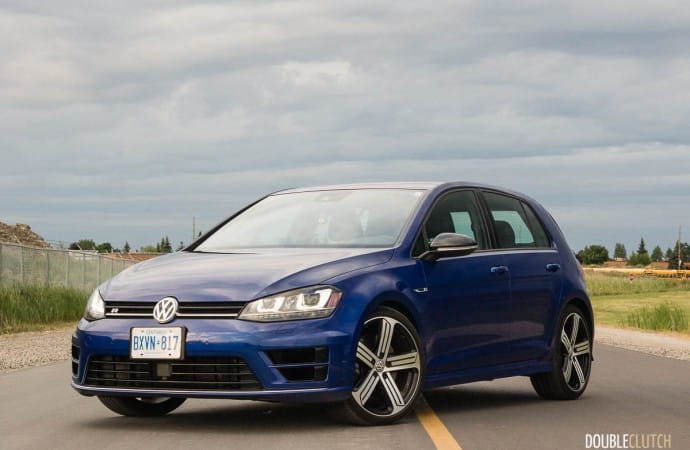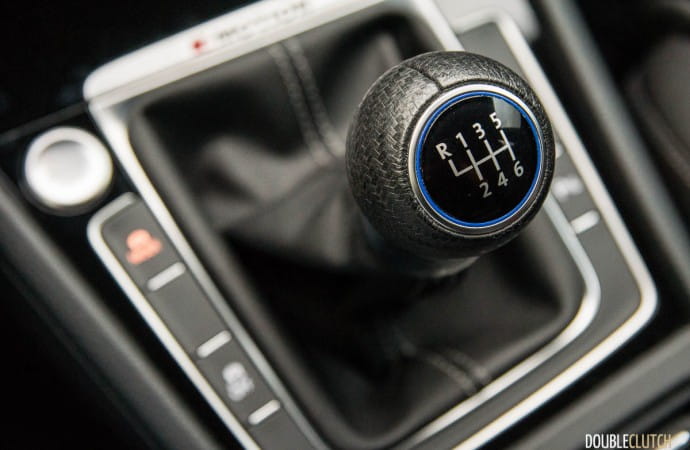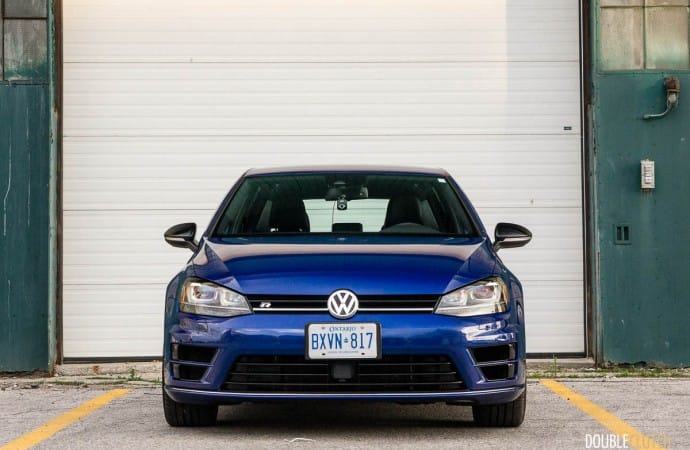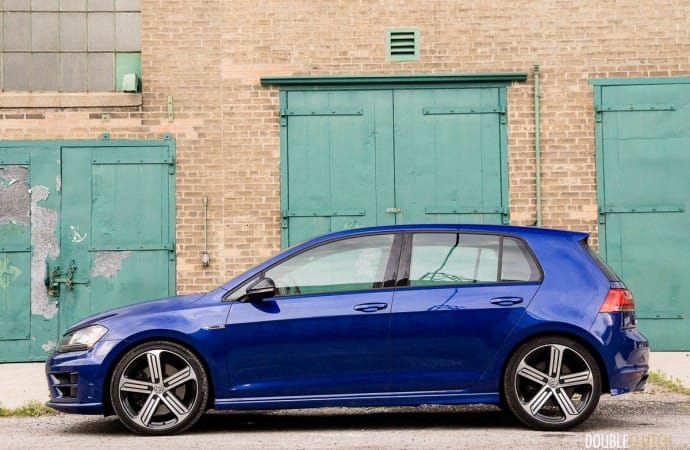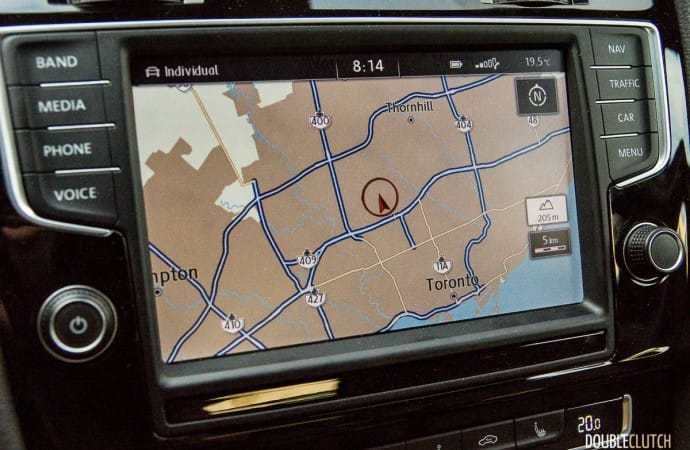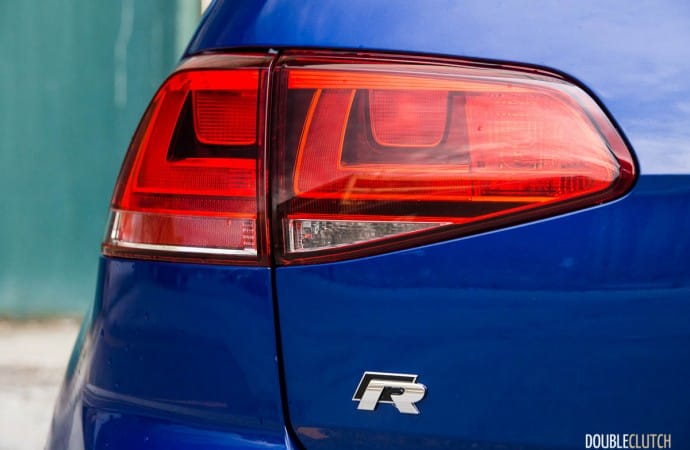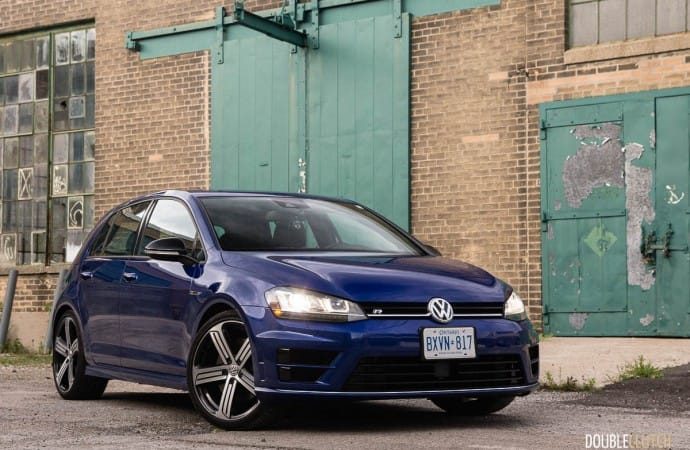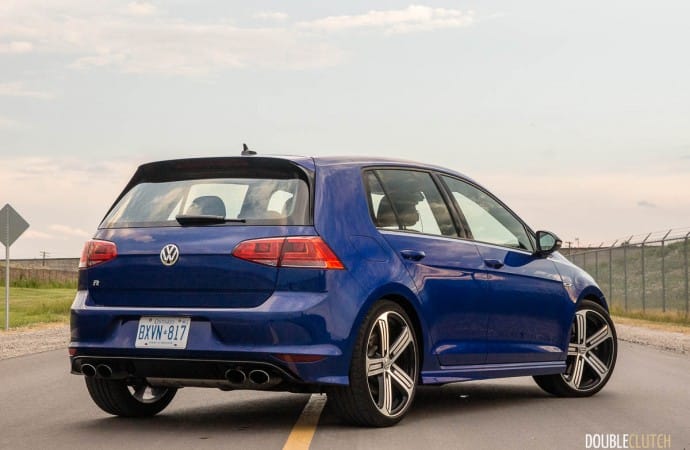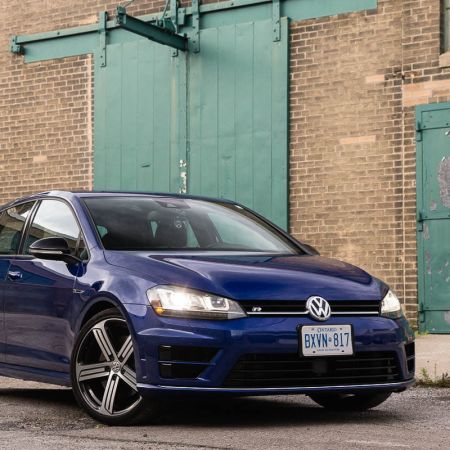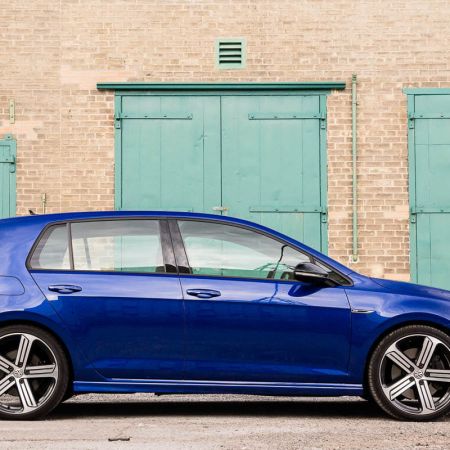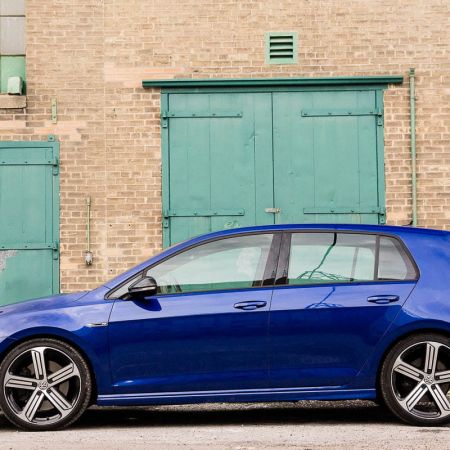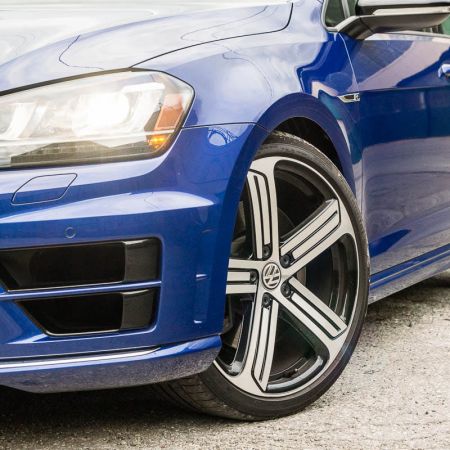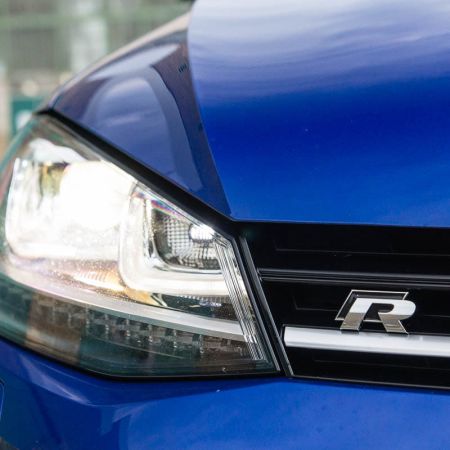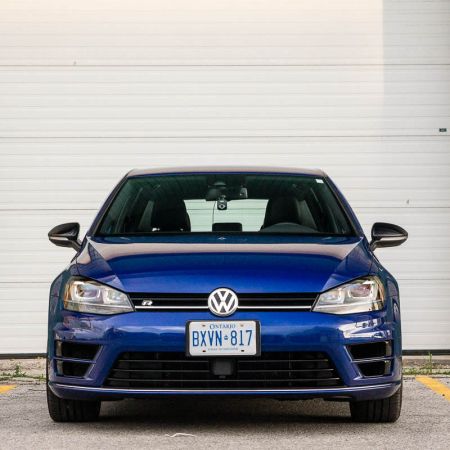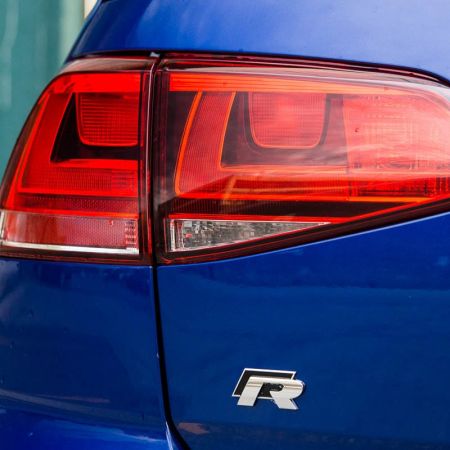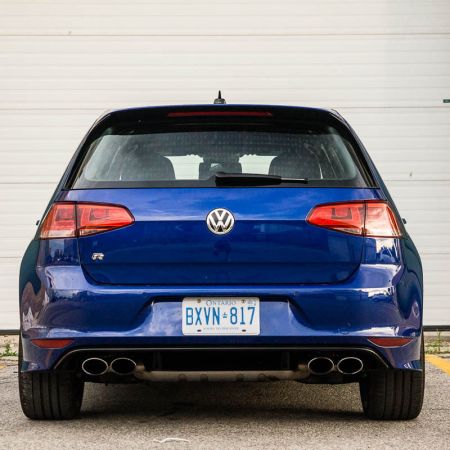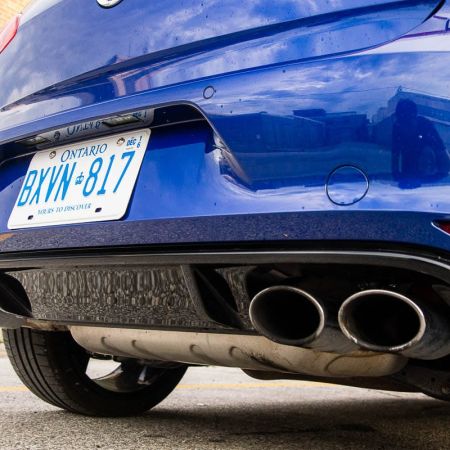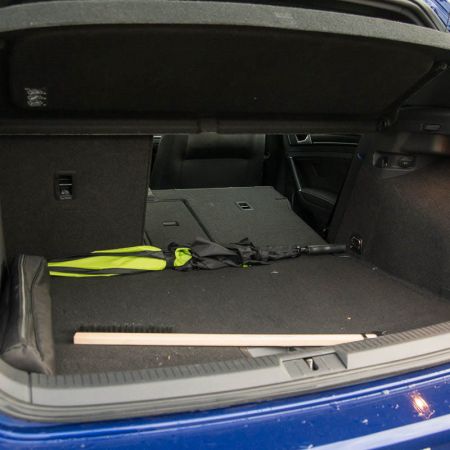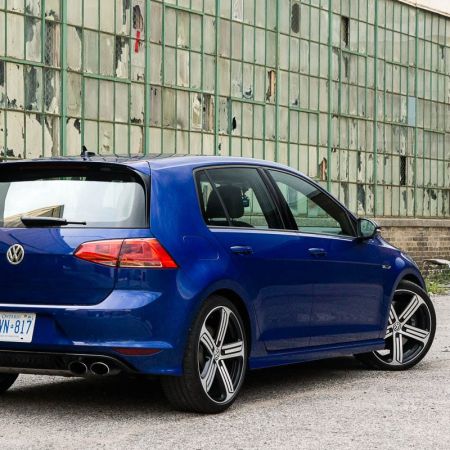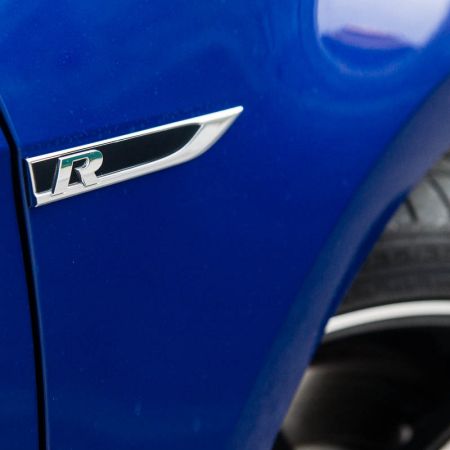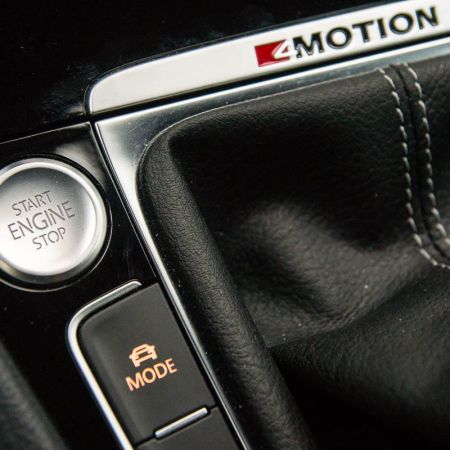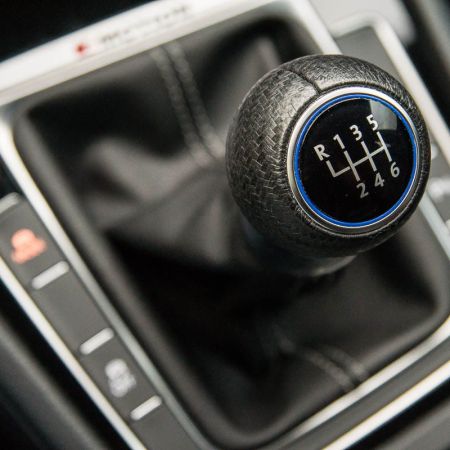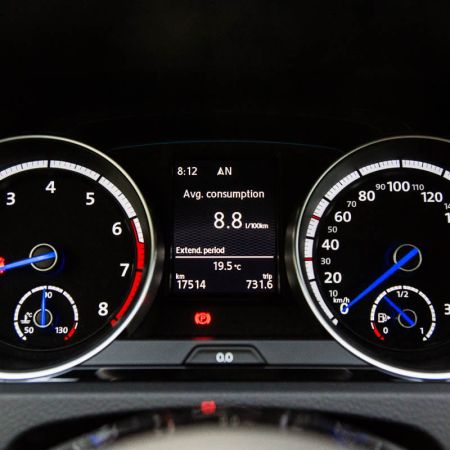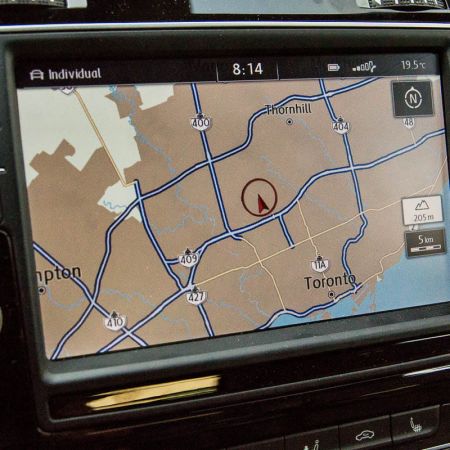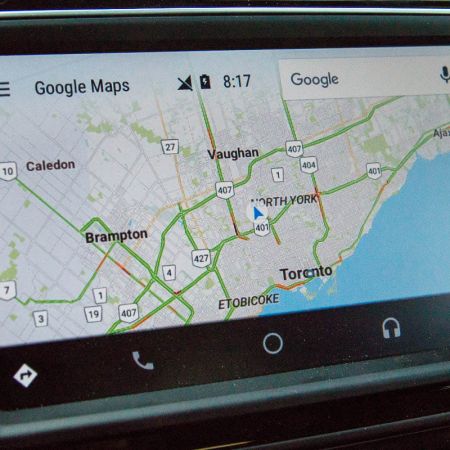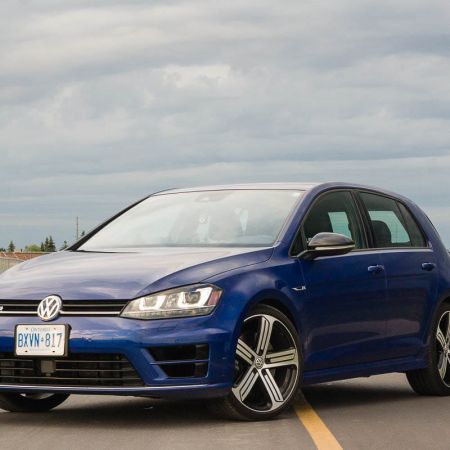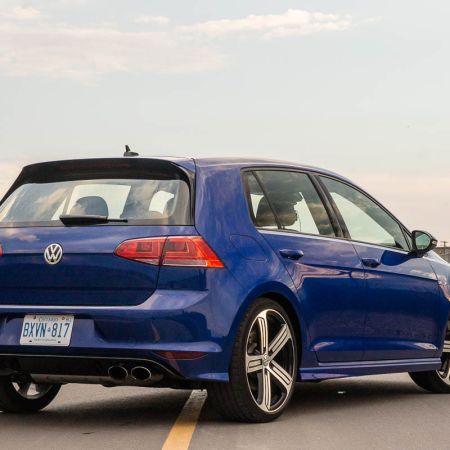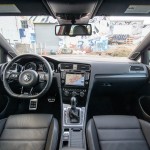The Volkswagen Golf R has been fortunate enough to ride the never-ending wave of hype since its announcement in the 2015 model year. As part of the versatile Mk7-generation of the Golf (reviewed here), the R sits at the top of the range as the hottest and fastest variant. We’ve spent lots of time with both versions of the Golf R: the transmission you choose is the single thing that defines the character of the car. The DSG automatic transmission is one we’ve come to love for its overall goodness, but it exudes a much different character simply because it is lacking that third pedal.
If you’re looking for a full review of the DSG-equipped Golf R, click here to check it out. It really depends on what you’re looking for: something that extracts the most speed out of the 292hp four-cylinder engine, or something that maximizes fun-factor of the hot hatch formula. I was fortunate enough to spend two whole weeks with a Tornado Red Golf R, and while I liked it a lot, the fact that a manual transmission option exists, meant I couldn’t really recommend one or the other until I sampled both. Thankfully, a Lapiz Blue Metallic Golf R with the manual transmission became available for testing.
Getting into a Golf R that has three pedals changes the game considerably. I’ve always preferred the manual transmission in just about every car on the road today, with only a few exceptions. Automatic transmissions, as good as they’ve become in the past ten years, don’t give the driver that feeling of control over what the powertrain is doing. My commute, even though it does involve a fair bit of stop-and-go traffic in the city, doesn’t hobble me to the point where my left leg becomes unusable.
That being said, the quick conclusion is this: the manual transmission Golf R is my choice between the two variants, hands down. The driver’s interface is something I value very much, and this Golf R nails it in pretty much every way. The shifter is superbly accurate and easy to operate, and the clutch pedal delivers a good amount of feedback to make normal launching and shifting very easy. I will concede that the DSG automatic transmission makes for faster launch (with its flawless launch control option), as the three-pedal version can bog a little bit if you don’t get the balance of revs and footwork correct. Regardless of the transmission you opt for, the Golf R will run to 100km/h in about five seconds – plenty fast for a practical hot hatchback.
For me, I went into this week with two questions – the first of which has already been answered above. The second one is something I’ve battled with in my head for quite some time. I’ve been a long-time Subaru enthusiast, coming this close to picking up a current-generation WRX (reviewed here) for myself. The STi appeals to me for its track-focused credentials, right out of the box. The increased spring rates, upgraded dampers, and big brakes all tug at my go-fast heartstrings.
The manual transmission Golf R competes head-to-head with Subaru’s excellent WRX STi, and I just couldn’t decide what I liked more. The Subaru delivers more personality via its unequal-length headers, authentic boxer-four sound, big brakes, and the gigantic rear wing. It also boasts excellent hydraulically-assisted steering, and a more favourable longitudinal powertrain configuration, complete with a customizable centre differential. I like my cars raw and involving, so the firm and brash feel of the STi is right up my alley, and has been for many years. Some complain it is a little too harsh overall, but it is a trade-off I’m willing to make, for the most part.
The STi (reviewed here) isn’t without its quirks – some of them may not be deal-breakers to some, but for others, they represent a significant obstacle, if you will. The first is the lack of a hatchback body style. Subaru has done a good job offering buyers the choice of a traditional four-door sedan, or the better five-door hatchback (no qualms as to where my preferences lie). For the most current WRX and STi, four doors and a trunk are the only way to get your hands on that excellent new chassis. The Golf R, on the other hand, comes only in a practical five-door hatchback configuration. I can confirm that a bicycle will indeed fit into the Golf R, but the front wheel had to be removed in order to properly close the rear hatch.
Next is the interior: people like to give Subaru a hard time for their interior furnishings, and most of the time, they’d be right. The current car is a big step ahead in terms of material quality, design, and ergonomics, but the Golf R really does feel premium – like an Audi would. The interior is way ahead of the Subaru in looks and features – the infotainment unit alone in the Golf R sends all of Subaru’s interfaces back to school. The inclusion of Android Auto and Apple CarPlay is just a bonus. The Golf R’s seats are somewhat less aggressive than the STi’s seats, but are much better for driving long distances. Little details like the soft ambient lighting also give the Golf R more of a premium feel. The Subaru edges it in terms of driver visibility, however. The amount of glass area surrounding the driver is quite a bit better than the Golf R.
In terms of power, both the Subaru STi and Golf R deliver similar amounts of rated horsepower (305hp and 292hp, respectively), but how they deliver that power to the driver and to the ground is where they differ, quite significantly. The STi uses the well-known EJ25, which utilizes legacy technologies like port injection to make the most of the forced induction. The Golf R benefits from direct injection and a more efficient exhaust configuration, so while the STi is rated higher, its torque peak arrives much later.
In practice, the STi exhibits quite a bit of turbo lag until you get close to the 4000rpm mark. The Golf R hits its peak torque value of 280lb-ft at only 1900rpm, and holds on all the way up to 5300rpm. This makes it a much more usable powerband not only in the canyons, but also on the street. To sum up this section: the STi features a more interesting engine if you’re into the turbo feel, but the inline-four in the Golf R is better, the rest of the time.
Both feature six-speed manual transmissions, but the Golf R allows you to opt for a DSG automatic if that’s what you’re looking for – so it gets another point there. Both feature all-wheel drive, but implement it in a very different way. Instead of going through a centre differential like Subaru does, VW attaches the latest Haldex differential to the Golf R transverse powertrain, which allows for quite a bit of flexibility in how torque is shifted from front to back, and even from side to side between individual wheels.
I had a few reservations about the all-wheel drive system in the Golf R: it’s still a transverse, front-biased system at the end of the day. In practice, the different approaches between the STi and Golf R aren’t very noticeable. The STi can be pre-configured to send more power to the rear wheels, but the Golf R manages this on its own – to the tune of 50% power to the rear wheels, as needed on a proactive and predictive basis. On a rainy day, I rounded a sectioned-off 90-degree corner and got back onto the power early; the Golf R hit boost and simply just exited the corner with maximum traction, and without any drama.
One item in the Golf R’s favour is the Dynamic Chassis Control. Toggling between the different drive modes produces a noticeable difference – mostly in the damping. The firmest setting is almost a little too firm; the excellent body control is great on the smoothest of roads, but in the real world, it ends up being a little too bouncy. The STi utilizes fixed (and inverted) KYB dampers, which are nice, but don’t allow the driver to soften things up when you’re just driving to and from work.
For the sake of practical comparisons, let’s talk about fuel consumption. Simply put, the Golf R is way ahead of the STi. It is rated at 10.9L/100km in the city, and 7.7L/100km on the highway. The STi, on the other hand, is rated at 13.8L/100km and 10.2L/100km, respectively. Doing some unscientific math, that works out to a gulf of almost 20% between the two cars. The STi’s short gearing as well as its request for 93-octane fuel doesn’t help matters, either. On a trip into cottage country (500km of mostly 80km/h roads), I managed to squeeze out an indicated average of 8.8L/100km – impressive because this number included my weekday commuting, too.
Both cars are also very closely matched in terms of pricing, too. Both straddle the $40,000 mark, and both don’t confuse owners with convoluted option packages. The base Golf R is actually the one to have, because of its long list of standard equipment. The optional Technology Package ($2,015) adds adaptive cruise control, blind spot monitoring, lane assist, forward collision warning, and built in satellite navigation. This last feature is a little redundant, because of the navigation provided by Android Auto or Apple Carplay. The one feature curiously missing from any Golf R is the availability of a sunroof. While sunroofs are nice to have on sunny days, increased helmet space is also nice to have, instead.
After a very enjoyable week with the manual transmission Golf R, I ended up at a crossroads. Would I still prefer the Subaru WRX STi at this point? The quick answer is no. Both cars go about themselves in vastly different ways. Volkswagen actually makes it a point to stress the Golf R’s low-key look as being a flash, rather than flashy. Some knock the STi for being a boy-racer car for kids, but I think it’s more accurate to say it is a vehicle that makes me feel young again, with all the noises and quirks it exhibits. I like the Golf R for its more practical package, more accessible power, much-improved fuel efficiency, and general competence in all areas. All of these benefits don’t come at the expense of performance, and it is for this reason that the Golf R becomes my choice between these two cars, at this price point. Make mine the Lapiz Blue Metallic, with the six-speed manual, and I’ll pass on the Technology Package.

